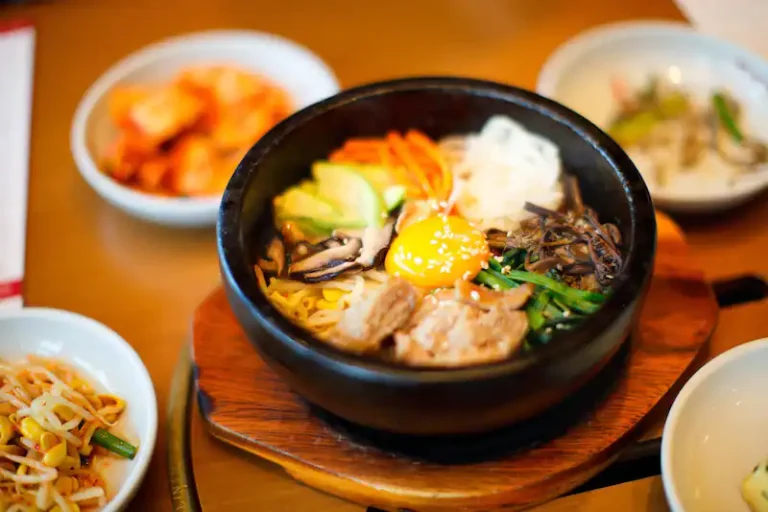Introduction: South Korean Cuisine
South Korean cuisine is a unique blend of flavors, ingredients, and cooking techniques that have evolved over centuries. It is renowned for its bold and spicy flavors, as well as its emphasis on fresh ingredients and balanced nutrition. South Korean cuisine includes a wide variety of dishes, from hearty stews and soups to grilled meats and vegetable sides. It is a cuisine that is deeply rooted in tradition, yet is constantly evolving with modern innovations.
Fermentation: The Key to South Korean Cuisine
Fermentation is a key component of South Korean cuisine and is used to create a variety of unique flavors and textures. Kimchi, a spicy fermented vegetable dish, is one of the most well-known examples of South Korean fermentation. Other fermented dishes include soybean paste, gochujang (a spicy pepper paste), and doenjang (a fermented soybean paste). Fermentation not only adds flavor to dishes but also helps to preserve them, making it an essential technique in South Korean cuisine.
Seasoning: Balancing Flavors in South Korean Dishes
Seasoning is another important aspect of South Korean cuisine, with a focus on balancing flavors to create a harmonious taste profile. Soy sauce, sesame oil, garlic, and ginger are commonly used to add umami and depth to dishes, while vinegar and citrus are used to add acidity and brightness. Spices such as gochugaru (Korean chili flakes) and doenjang also add heat and complexity to dishes. The goal is to create a balance between sweet, salty, spicy, and sour flavors, resulting in a bold and satisfying taste experience.
Cooking Techniques: Grilling, Braising, and More
South Korean cuisine utilizes a variety of cooking techniques, from grilling to braising and boiling. Grilling is especially popular, with meats and seafood often cooked over an open flame or on a grill pan. Another popular technique is braising, which involves cooking meat or vegetables low and slow in a flavorful liquid. Stir-frying and pan-frying are also commonly used techniques for creating quick and easy dishes. South Korean cuisine also features several unique cooking vessels, such as the dolsot (a stone bowl used for cooking rice) and the ttukbaegi (a clay pot used for stews and soups).
Street Food: A Glimpse into South Korean Cooking
South Korean street food is a great way to experience the flavors and techniques of South Korean cuisine. Popular street foods include tteokbokki (spicy rice cakes), kimbap (sushi-like rolls), and hotteok (sweet pancakes filled with honey and nuts). These dishes are often quick and easy to eat on the go, making them a popular choice for locals and visitors alike. Street food also offers a glimpse into the unique ingredients and flavors of South Korean cuisine.
Modern Innovations: The Evolution of South Korean Cuisine
South Korean cuisine is constantly evolving, with modern innovations adding new twists to classic dishes. Fusion cuisine has become increasingly popular, with chefs blending traditional South Korean ingredients with culinary techniques from other cultures. Molecular gastronomy is also gaining popularity in South Korea, with chefs experimenting with new cooking methods and ingredients. Overall, South Korean cuisine is a dynamic and exciting cuisine that continues to evolve with each passing year.

